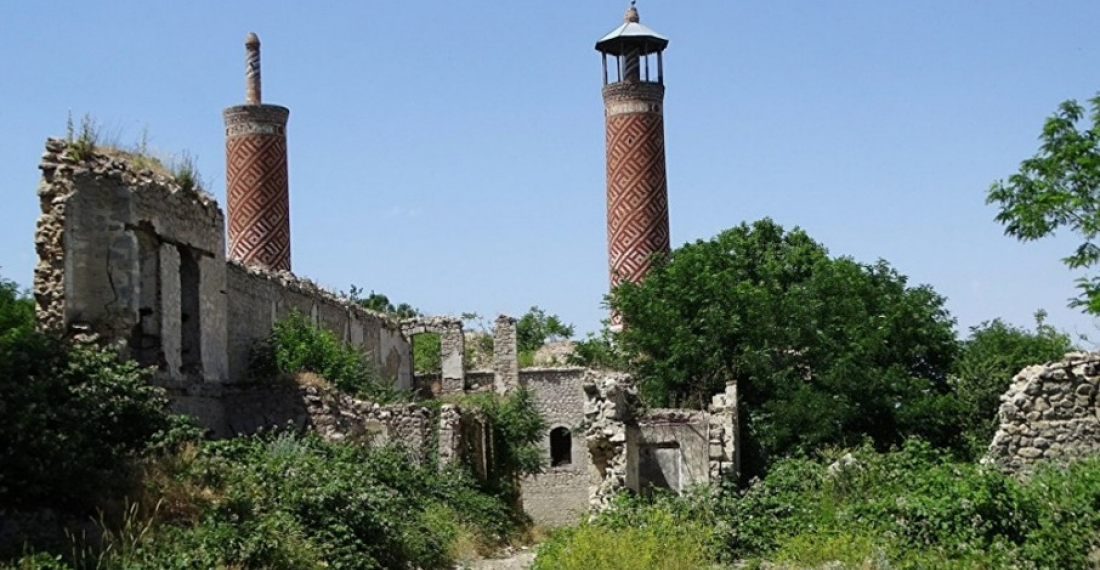One year after the end of the recent tragic Armenia-Azerbaijan armed conflict, the European Union has so far failed to provide any tangible aid to rebuild the formerly occupied territories. An EU involvement in the Karabakh reconstruction process could facilitate not only the return of up to a million refugees and IDPs but also significantly contribute to the long-term stability of the South Caucasus – a primary goal of EU’s Eastern Partnership and Neighborhood Policies, writes Nurlan Mustafayev in this op-ed.
Since the early 1990s, the destructive conflict between Armenia and Azerbaijan and the ensuing three-decade-long Armenia’s occupation has left most of Azerbaijan’s larger Karabakh region in ruins. After the so-called ‘44-Day War’ in late 2020, the field reports by BBC, New York Times, and Wall Street Journal reveal the desolate Karabakh region - about the size of the Northern Ireland - stripped of all buildings and infrastructure during the occupation, a fact which now hinders the return of about a million displaced persons.
By virtue of the scale of devastation and the needed resources, rebuilding Karabakh, particularly the seven districts adjacent to Upper Karabakh, requires massive long-term efforts with broad international participation. The EU’s active involvement and leadership in post-war reconstruction projects are vital for rebuilding Karabakh. Such an effort could immensely alleviate the humanitarian situation of a million ethnic Azerbaijanis and Armenians and positively contribute to the post-war reconciliation process.
As a result of the three-decade-long conflict, the once prosperous larger Karabakh region – an integrated agricultural, industrial, and transit hub – where ethnic Azerbaijanis and Armenians coexisted for millennia was transformed into an occupation zone of ghost towns and villages. The UN estimated the total economic damage resulting from the occupation at approximately $53.5 billion, which is beyond the capacity of a small nation like Azerbaijan to invest and rebuild. Rebuilding Karabakh is primarily about the return of about a million IDPs displaced in the early 1990s from the larger Karabakh region, many of who have been living in terrible housing conditions in the past 30 years. Secondly, it is about the revival of the severed cultural, social, and economic linkages, critical for the gradual reconciliation of these two nations in Karabakh and beyond.
During this period Karabakh has become one of the most heavily mined regions in the world. About a million anti-personnel and anti-tank mines were planted in the previously occupied territories, making the reconstruction efforts and refugees’ return impossible. The cost and time required for de-mining are estimated to be over ten years, a tremendous challenge for a small nation like Azerbaijan.
The reconstruction project also requires rebuilding more than 150,000 homes and extensive civilian infrastructure in the previously occupied territories to accommodate about a million people in the next few years. Azerbaijan already allocated about $1.3 billion for the project. But, such a complex project requires tens of billions of euros, thousands of contractors and suppliers, and international assistance and know-how.
The immense humanitarian and security aspects of the post-conflict situation make it an urgent regional issue within the frame of the EU’s Eastern Partnership and Neighborhood Policies. These policy frameworks aim at bringing, among others, economic and political integration and long-term stability in the South Caucasus region, which should needs to take into account the critical post-war humanitarian needs.
However, the EU’s current policy tends to treat the post-war Karabakh differently from other post-conflict efforts, an approach that neither reflects a balance between the conflicting parties nor accounts for the grave humanitarian nature of the post-conflict situation. For instance, while the EU committed significant financial assistance of 3 billion euros to Armenia in the post-war period, it fell short of any considerable aid to Azerbaijan to rebuild the war-torn region. Political inconsistency coupled with the financial aid imbalance creates uncertainty about the EU’s long-term strategy in the region.
Playing an active part in the rebuilding of Karabakh could fill this void. The EU should see rebuilding Karabakh not only as a humanitarian endeavor alone but also as an essential component of promoting Armenia-Azerbaijan peace. In this respect, the inclusion of the Karabakh reconstruction project within the EU’s ‘Post 2020 Eastern Partnership Priorities’ as a standalone item could significantly advance the goals of both EU policy frameworks. Notably, putting the rebuilding Karabakh project at the center of its regional engagement could substantially increase the EU’s soft power and balance Russia’s seemingly sole powerbroker role in the ongoing peace process.
Time is of the essence in post-war reconciliation. The timely reconstruction of the larger Karabakh area with the participation of international players like the EU will encourage the speedy return of ethnic Azerbaijanis and Armenians under the UNHCR’s supervision, as envisaged in the 10 November Trilateral Agreement (Article 7). It is an essential ingredient for the ultimate resolution of the Armenia-Azerbaijan conflict where the EU should play a crucial role.



